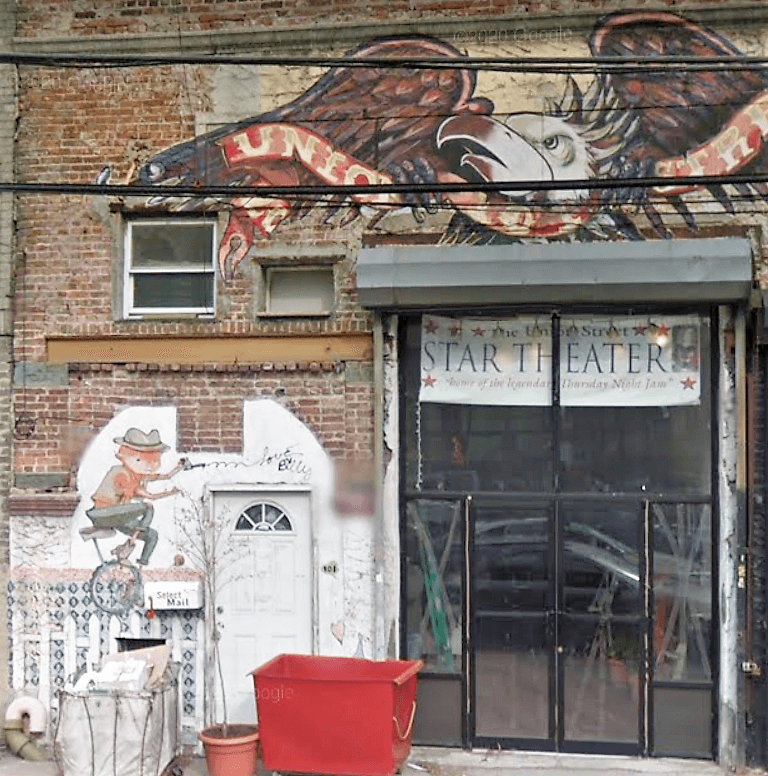“Yo, Enright! Wake up! I need a Patty’s Day story.”
It was George again. “But, boss, I’m working on this important piece about the new fish section at Food Bazaar!”
“Look, your mother was born in Limerick and your twin sister lives there, so toss the fish and get busy.”

Damn. As a very dedicated and accomplished consumer of adult beverages, I’ve always felt St. Patrick’s Day is for amateurs. I prefer to spend it listening to Van Morrison & the Chieftains, the Waterboys, Thin Lizzy and such, sipping some Jameson’s, reading Irish verse, including Hamill, Kavanaugh, Breslin and the like, contemplating family history, avoiding bars and all that brash back-slapping…Hmmm…Come to think of it, the pandemic has been one long St. Patty’s Day for me. Anyway, I researched March 17th in Red Hook, fell down an Internet rabbit hole, and when I came out the other side, George was there to greet me again. Damn.

OK, to begin, Red Hook never had any St. Patrick’s Day parades. They were first organized in the more populous northern realms by Brooklyn’s Democratic political machine, flush with newcomers fleeing Ireland’s potato famine. By the mid-1850s there would be 60,000 marchers assembling in Williamsburg, then winding their way south through Fort Greene and Boerum Hill, down to the waterfront district along Columbia Street from Baltic to Atlantic before turning north again to Joralemon Street’s City Hall. After the Brooklyn Bridge opened in 1883, the Manhattan parade drained the ranks until by the turn of the century, only 6,000 Irish would march, and never advance west of Court Street. In 1912, two years after Columbus Day became a legal holiday in New York, Italians started marching the same downtown streets made popular by the Irish until both parades got swallowed up by the bigger 5th Avenue stage.
The End. Well, not quite. In the course of my research into Irish policing, which at one point seemed important for this article, possibly due to some Jameson’s, I learned about Italian immigrants during the 1890s creating an entertainment mecca on Union Street between Van Brunt and Columbia Streets, which then formed the heart of Brooklyn’s Little Italy. Three Italian theatres along that strip did Punch & Judy shows for the kids and variety shows/marionette performances for the adults. By 1905, even the New York Times was plugging a light opera benefit performance there for volcano victims in Italy. But somebody appeared to dislike the impresario managing much of the activity, Enrico Constantino, who kept getting busted for technical violations.

As Christmas of 1905 drew near, a sympathetic Irish magistrate, upon hearing from the Hamilton Avenue precinct captain how well-behaved the audiences were, and after the City attorney couldn’t account for why the Italian shows were getting disproportionately rousted, he threw out three of Constantino’s arrests, observing that “the community there is quite a poor one, the price of admission very low and these places furnish a small amount of amusement for a certain foreign population of our community, who otherwise would be deprived of it altogether.”
But after being busted time and again for obscenity and blue law violations over the next five years, Constantino said goodbye to Union Street and took an Italian Grand Opera Company on the road. He wound up in New Orleans but alas, bad fortune followed him there. Enrico’s “treasurer” in the Big Easy got busted for bad checks and deported to Cuba. Even worse, a press clip from January 1913 reported that “after a highly unsuccessful season of about 10 days, Constantino nearly killed one of his leading singers while going through some realistic sword-play on the stage at the Tulane Theater, which ended the engagement.” I see Enrico being played by Nathan Lane in a bio-pic.

While Constantino was eking out a modest living with his troupe, South Brooklyn’s greatest actor was being born in 1915 over a grocery store at the corner of Union & Hicks Streets, a block away from the still-thriving marionette theaters. Eli Wallach was the only Jewish kid on the block and decided early on that personality and charm would take him a lot further than fisticuffs. In 1956, channeling memories of the Sicilians he grew up with, Wallach gave a bravura performance in his first movie, playing a Sicilian immigrant in the Tennessee Williams-Elia Kazan collaboration, Baby Doll. Kazan, a Greek immigrant from Turkey, also gave us the classic Red Hook flick, On the Waterfront.

While longshoreman Terry Malloy was battling corrupt Johnny Friendly on the big screen’s waterfront, the Puerto Rican influx to New York was at its height. The first Puerto Rican Day Parade occurred in June of 1958 but by then, Manuel T. Sanchez was already celebrating the 25th anniversary of his Antioch Pentecostal Church on Atlantic Avenue (the NW corner of Atlantic & Court Street would be renamed in his honor in 2009). One of his sons, Jose “Tuffy” Sanchez, became a community organizer, holding court as the head of the Puerto Rican Waterfront Center in a corner storefront at Columbia & Union (now a Chinese take-out joint). Tuffy was also a major player in popularizing Salsa music, founding the 3 & 1 Social Club with Latin music promoter Ralph Mercado in the 1960s.

In 1970 the Irish, Italians and Puerto Ricans of South Brooklyn combined their clout when Eileen Dugan, Michael Pesce, and Tuffy, together with his fellow Korean War vet Buddy Scotto, formed the Independent Neighborhood Democrats. Tuffy spent his last years working for Mercado’s RMM Records, providing the cover photos for a Tito Puente greatest hits LP. In 2015, ten years after his death, the northeast corner of Columbia and Union Streets was renamed to honor Tuffy.
Finally, 90 years after the puppets had left the block, a guy named George Fiala launched the Red Hook Star Review at 101 Union Street. The building was formerly a marble-cutting shop, and before that, an auto repair garage, so George had a lot of extra room to play with when he signed a lease in 2010. He built a stage with a small café on the second floor where he’d jam with pals and it gradually morphed into the Union Street Star Theater.

I hate to interview living people for these pieces, but I had to ask George about it. “I called it the Star Theater because that’s what it used to be called back in 1899 when it was just a barn. Arturo Galeano, an old-timer who runs the real estate place across the street with his son, told me The Star was once a life-sized puppet theater. You know me, I love the past, so I decorated the place with Italian marionettes.” After a few glorious years of hybrid music that Brooklyn can’t help but inspire, Star Theater’s performers moved to Rocky Sullivan’s and George moved his operations to another historic Red Hook building on Van Brunt. Now 101 Union is a custom bicycle shop, Maglia Rosa – the Giro d’Italia cycling race awards its winner a pink jersey, or Maglia Rosa, hence the name. I think Enrico Constantino would have approved.
Well, that about wraps it up. Irish, Italians, Puerto Ricans. I even threw in a Turkish Greek and a Jew faking a Sicilian accent for variety. And that’s just one small slice of the ever-changing tapestry of Brooklyn. Now where did I put that Jameson’s?










